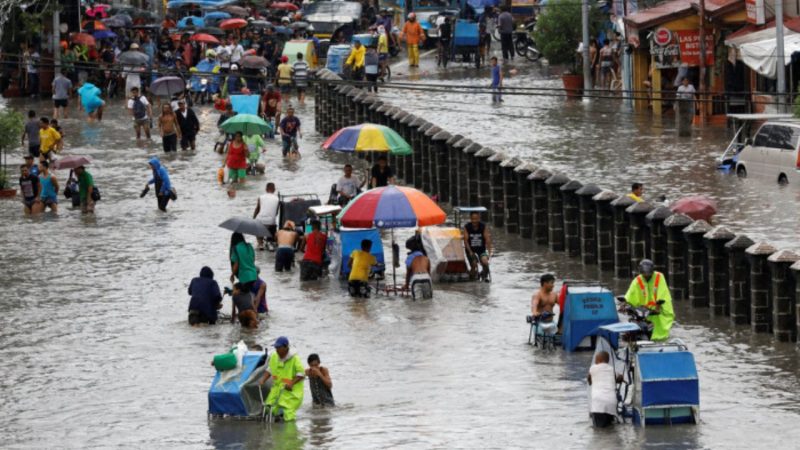Rising sea levels are causing heavy flooding in low-lying areas in the Philippines. (Photo courtesy of Institute for Climate and Sustainable Cities)
MALACAÑAN PALACE, Manila — Filipinos should be very, very concerned about global warming, Climate Change Commissioner Albert Dela Cruz Sr. has warned amidst rising sea levels that have posed a risk to coastal villages in the Philippines, particularly in the Visayas region.
Commissioner Dela Cruz issued the warning following a report from the Institute of Economics and Peace (IEP), which disclosed that the archipelago is the country at most risk from climate change.
Based on the Climate Central study, it is projected that roughly 150 million people currently live in areas set to be submerged by 2050 and about 70 percent of them are in Southeast Asia and the Philippines is at the top spot.
“Geographically, we are prone to typhoons because we are located in the Pacific typhoon belt and we are hit by them at an average of 20 annually. In the past years, we have witnessed the intensity of these storms increasing. Some of these deadly typhoons include Reming, Frank, Winnie, Pablo, and Yolanda, all of which happened during the new millennium. These accounted for more or less 12,600 fatalities,” Dela Cruz described the actual situation.
The climate official added that the worrisome trend can be attributed to rising sea temperatures.
“However, while this means typhoons are less frequent, it also entails that they are likely to be more powerful. Add the fact that a lot of Filipinos live on the coast and future typhoons may produce even more fatalities in the long run,” he apprised.
The commissioner cited a report by Climate Science Advisor of the Institute for Climate and Sustainable Cities meteorologist Lourdes Tibig who revealed that a coastal island in the Visayas may be fully submerged by the year 2050.
Tibig claimed that an island in the region is experiencing a sea level rise faster than the global average.
“The global average is 3.7 millimeters per year. In Visayas islands, in that particular study site, they found out that the sea level rise is happening four times 3.7 millimeters per year. 3.7 millimeters times four. That’s more than one centimeter every year,” she expressed.
Despite the alarming statistics, Dela Cruz said that there is still time to address the growing concern even as he added that at the very least, Filipinos are now becoming more aware of the impending crisis.
“According to a 2022 Statista survey, 73.8 percent of respondents in the Philippines believed that climate change is a serious and immediate threat. All we need to do now is to fast track our national climate change action through a whole-of-country and -community approach in mitigating and adapting to the impacts of climate change and global warming,” he concluded. (ai/mnm)







